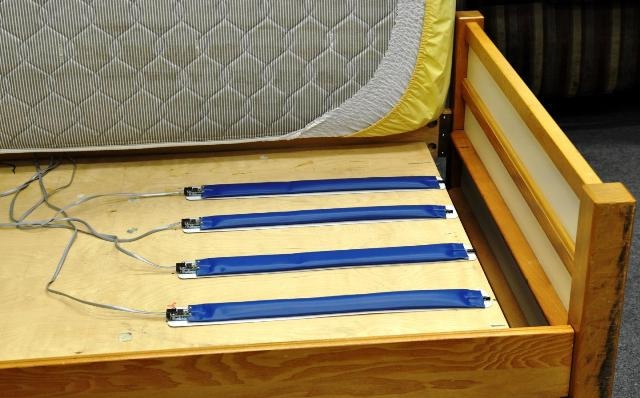Jun 2 2016
A team of researchers from the University of Missouri have been working on creating and evaluating motion-capture technology to assist older adults “age in place” for over the last 10 years.
 Bed sensors developed by Skubic and her team now have the ability to continuously monitor heart rate, respiration rate and overall cardiac activity. (Photo Credit: MU News Bureau)
Bed sensors developed by Skubic and her team now have the ability to continuously monitor heart rate, respiration rate and overall cardiac activity. (Photo Credit: MU News Bureau)
Earlier studies have made use of video game technology and several web-cameras to identify health changes in residents at Tiger Place. Now, two new studies illustrate a way to monitor heart health using bed sensors and walking speed with radar to maintain the health of older adults and raise a caution of probable issues.
In-home sensors have the ability to capture early signs of health changes before older adults recognize problems themselves. The radar enhances our ability to monitor walking speed and determine if a senior has a fall risk; the bed sensors provide data on heart rate, respiration rate, and overall cardiac activity when a senior is sleeping. Both sensors are non-invasive and don’t require seniors to wear monitoring devices.
Marjorie Skubic, Professor of Electrical and Computer Engineering, University of Missouri
For a period of two years, the radar sensors were utilized to monitor the walking speed of residents in 10 Tiger Place apartments. The radar devices were hidden in a wooden box and kept within the rooms of all senior residents. The residents were then provided monthly evaluations by professionals to determine whether they were in danger of potential falls. The data gathered was then evaluated against the data captured by the radar.
“Before using radar, we were able to estimate an individual’s walking speed and have an idea of their health status,” said Dominic Ho, co-author and professor of electrical and computer engineering in the MU College of Engineering. “Now, we have data that definitely shows how declines in walking speed can determine the risk for falls.”
Skubic and her team also built a bed sensor that possessed the ability to constantly monitor respiration rate, heart rate, and total cardiac activity. The bed sensors are built using a hydraulic transducer, which is a bendable tube of water. The transducer is capable of measuring ballistocardiogram. As part of the research, four hydraulic transducers were kept underneath a mattress to save cardiac data of the residents.
Heart disease is a major cause of death for both men and women. Having a sensor continuously monitoring heart rate provides a significant benefit for older adults. The bed sensors also allow us to collect data on sleeping patterns– when people are in bed, how often they are in bed, and how long they are in bed. Similar to walking speed, sleep patterns can detect early signs of illness.
Marjorie Skubic, Professor of Electrical and Computer Engineering, University of Missouri
The studies using radar and the bed sensor provide non-invasive monitoring systems that help identify early indications of illness. Skubic along with her team aim to test other sensors that can additionally enhance very early detection of modifications in health, so that health issues can be looked into while they are still minor and controllable.
The study “Estimation of Human Walking Speed by Doppler Radar for Elderly Care” of late was accepted by the Journal of Ambient Intelligence and Smart Environments.
The study was funded by the Agency for Healthcare Research and Quality. The study “Heart Rate Monitoring Using Hydraulic Bed Sensors Ballistocardiogram” recently was accepted by the Journal of Ambient Intelligence and Smart Environments. Marilyn Rantz, Curators’ Professor Emerita of Nursing in the Sinclair School of Nursing also contributed to the study.
The National Science Foundation provided funding for the study.